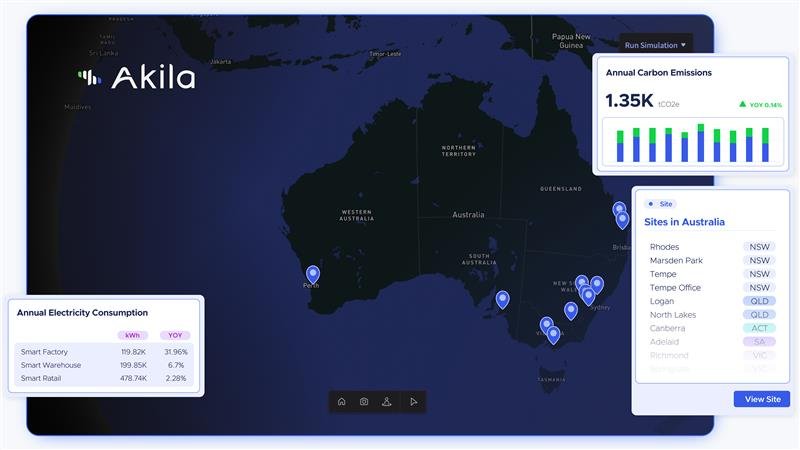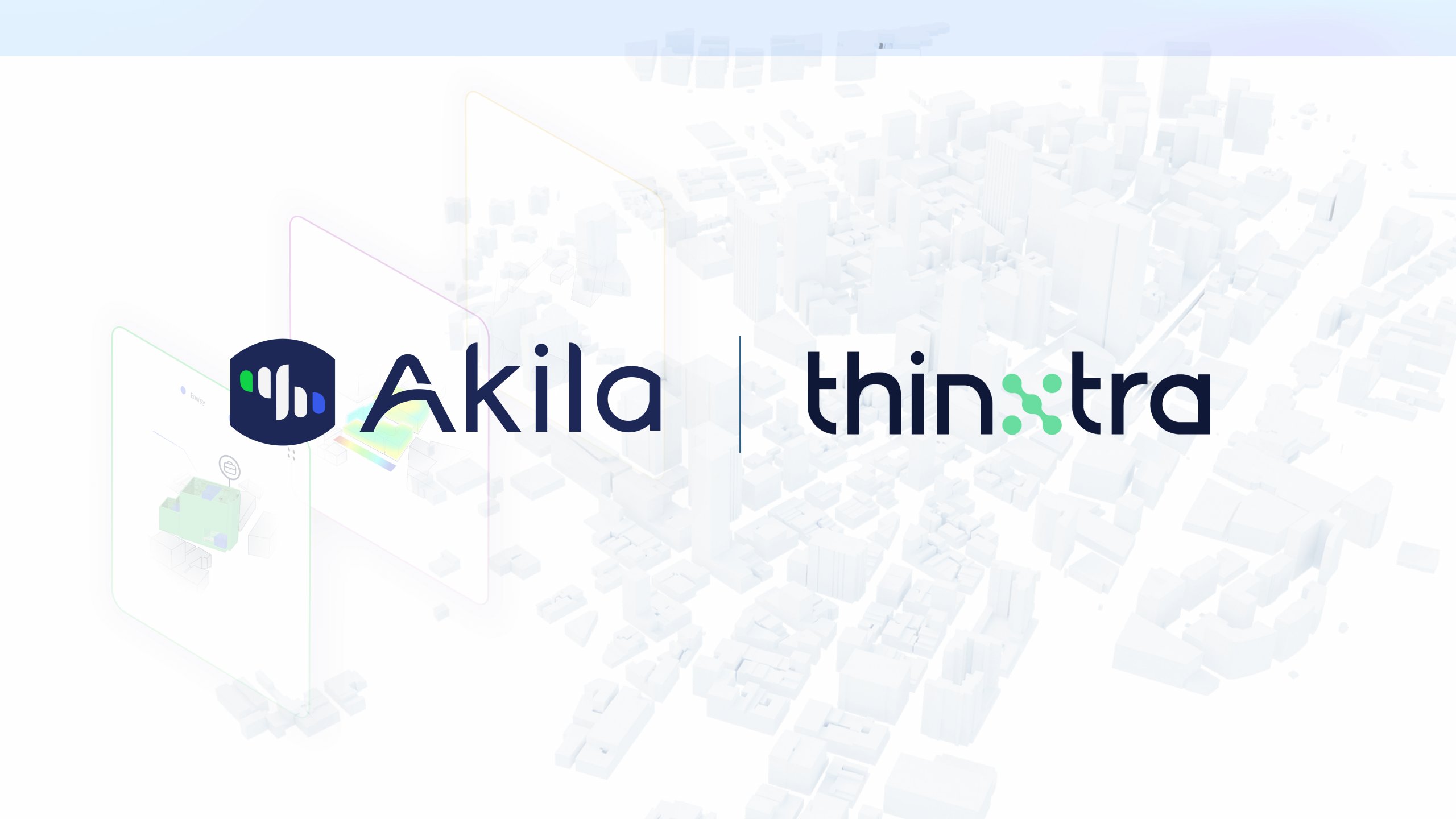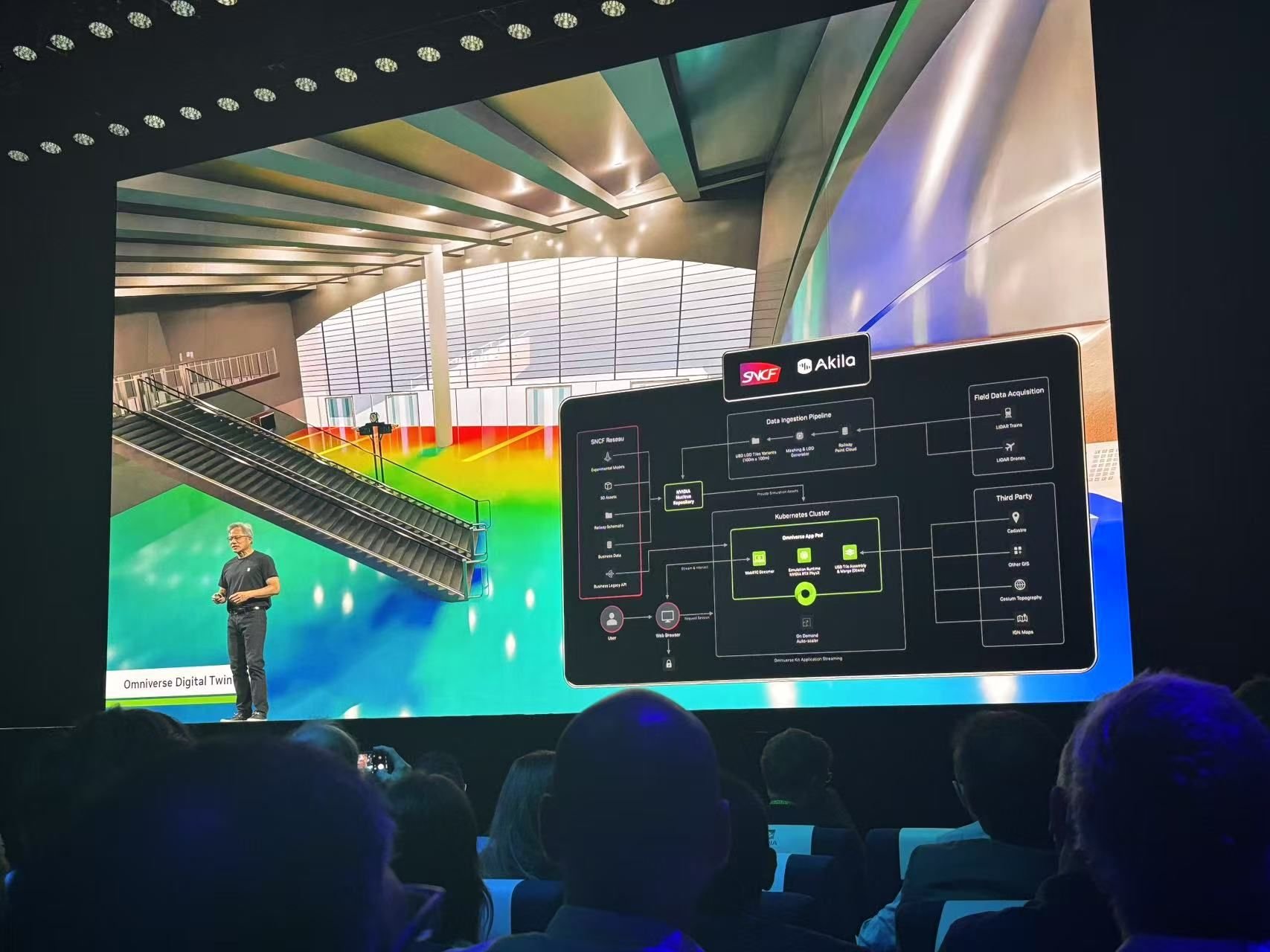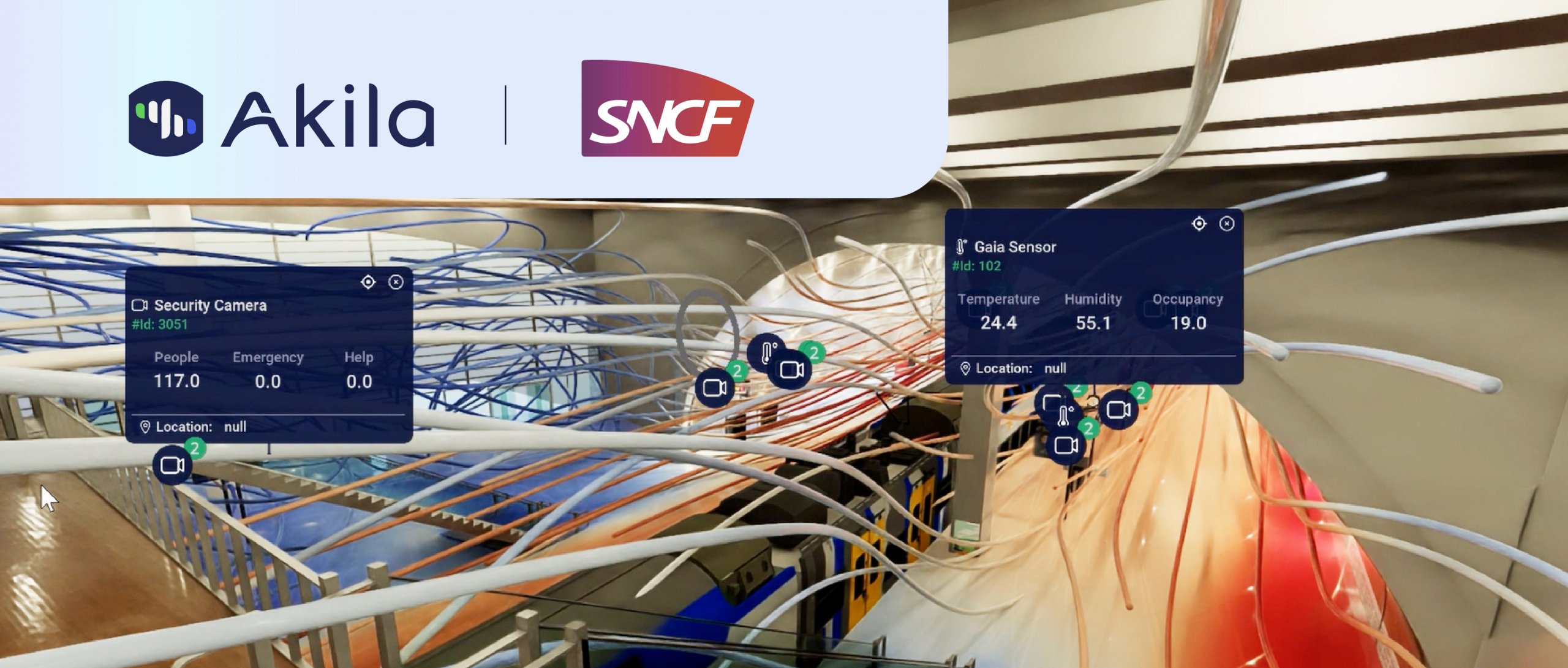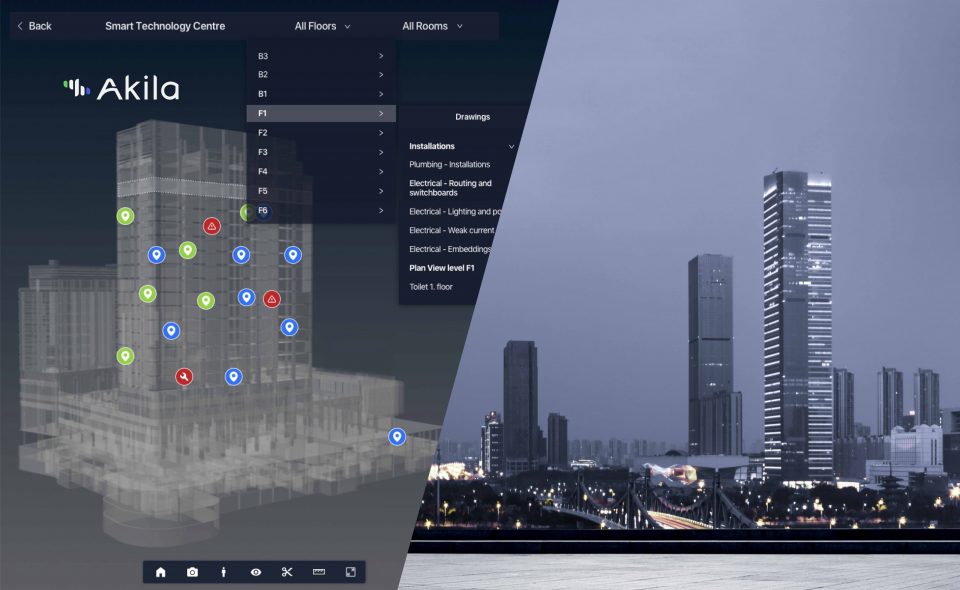
Building automation has come a very long way over the years, leading to what we now refer to as “smart building” technology. Smart buildings leverage a whole range of technology solutions such as Building Management Systems (BMS) / Building Automation Systems (BAS), Energy Management Systems (EMS), Computerized Maintenance Management Systems (CMMS), Integrated Working Management Systems and more to make the day-to-day operation of facilities more efficient.
These systems have revolutionized the operation of facilities by providing enhanced control, reducing waste, improving data quality, and optimizing operations and costs.
In the heart of this evolution, Akila stands out as an all-in-one digital twin data platform for buildings. It integrates every system and sub-system into a single source, eliminating silos and contextualizing each part, process, and performance to the entire building.
Unlike typical BMS and EMS software, the Akila digital twin is designed to work with a wide range of hardware, offering greater flexibility and customization. This complete approach ensures that all aspects of building management are seamlessly integrated, providing a comprehensive and efficient solution for modern smart buildings.
Let’s break it down by each different system to see where Akila excels versus traditional tech.
Building Management System (BMS)
Energy Management System (EMS)
Computerized Maintenance Management Systems (CMMS)
Integrated Workplace Management Systems (IWMS)
Traditional building management systems
In today’s increasingly interconnected world, the efficient management of building operations and energy consumption is more critical than ever. Various systems have been developed to address these needs, each offering unique capabilities and benefits. The four key technologies—Building Management Systems (BMS), Energy Management Systems (EMS), Computerized Maintenance Management Systems (CMMS), and Integrated Workplace Management Systems (IWMS)— play a vital role in optimizing building performance and resource utilization.
These technologies have been shaping the landscape of building and energy management, paving the way for smarter, more sustainable, and highly efficient operational practices. Here is how they work and their benefits:
BMS (Building Management System)
A BMS (also known as BAS or BCS) is a computer-based control system installed in buildings that control and monitors different systems in a building. The BMS system typically integrates multiple systems such as heating, ventilation, air conditioning, lighting, and security into a unified system. This centralized control allows for efficient management of the building’s energy consumption, improves the indoor environment, and helps to ensure the safety of the building’s occupants.
EMS (Energy Management System)
An EMS is a software platform that monitors and controls an organization’s energy usage. The EMS allows organizations to track their energy consumption, identify areas for improvement, and implement energy-saving strategies. The system can integrate with various building systems, such as lighting and HVAC, to provide a comprehensive view of energy usage.
The best use of an EMS is to monitor systems and identify anomalies in energy use. An EMS can identify where and how energy is being wasted. It can measure energy use against a baseline and alert operators when it goes off track. It can also simulate energy use in different scenarios to help with planning operations or projects.
CMMS (Computerized Maintenance Management System)
A CMMS is a software application used to manage maintenance operations and track equipment maintenance. The system provides a centralized database to store maintenance records, schedules, and history and enables the efficient planning and execution of maintenance tasks. CMMS can automate tasks such as work order generation, scheduling, and resource allocation, and can generate reports to provide valuable insights into maintenance operations.
By reducing manual processes and providing real-time data on maintenance activities’ status, CMMS can help organizations improve equipment reliability, reduce downtime, and lower maintenance costs. Additionally, CMMS can help organizations comply with industry regulations and standards, such as OSHA, by providing a clear record of maintenance activities.
IWMS (Integrated Workplace Management System)
An IWMS is a comprehensive software platform that helps organizations optimize their workplace facilities, including real estate, infrastructure and facilities management. IWMS integrates various modules such as space, property, maintenance and sustainability management into one platform. This integration allows for better decision making, increased operational efficiency and better alignment with organizational goals. By providing a complete view of workplace management, IWMS helps organizations to boost productivity, reduce costs and create a more sustainable and efficient work environment.
But the field of building and energy management systems is rapidly evolving, driven by emerging technologies.
Innovation in Building and Energy Management Systems
New technologies like IoT, open APIs, cloud-based storage, artificial intelligence (AI) and machine learning (ML) are also improving the way buildings are managed and maintained:
- IoT: IoT devices enable real-time monitoring and control of building systems, providing detailed insights into operational performance and energy consumption.
- API Integrations: Open API integrations facilitate seamless connectivity between different systems and platforms, enhancing interoperability and data sharing.
- Cloud-Based Storage: Cloud-based storage solutions offer scalable and secure data management, allowing for remote access and real-time analytics.
- AI and Machine Learning: AI and ML algorithms analyze vast amounts of data to identify patterns, predict maintenance needs, and optimize energy usage, leading to smarter decision-making and increased efficiency.
These innovations are revolutionizing building operations management, driving efficiency, sustainability, and enhanced performance across the industry.
What is Akila?
Akila is bigger than any individual system. It is an all-in-one digital twin data platform for buildings designed to unify and streamline your organization’s operations data. It consolidates real-time data from buildings using IoT sensors or open API integrations, offering a complete view for monitoring and optimizing operations. Akila excels in analyzing building metrics and visualizing performance, enabling you to share insights with both internal and external stakeholders.
Akila’s interoperability and extensibility allow seamless integration with existing and future systems, making it a single source of truth for your building management needs. Furthermore, Akila can go beyond just linking all systems at the individual building level to include an entire property portfolio in the same platform. The level of deep data and scalable deployment provided by Akila is what our customers leverage to optimize ESG performance.
Our platform allows you to monitor, track, and analyze utility usage, providing a deep understanding of resource consumption. By identifying inefficiencies in energy-intensive systems like HVAC, Akila helps you optimize these systems to reduce costs and carbon emissions. With advanced analytical tools, benchmarking, and forecasting capabilities, Akila supports informed decision-making through meaningful interactions with data.
Akila solutions VS traditional systems
Akila VS BMS
Akila brings in the functionality of a BMS and goes even further beyond. We build upon the useful features of a BMS and pair them with a full-picture system that includes more in-depth looks at the inter-relation of different systems and the operations surrounding them. Akila then leverages this BMS data to help businesses meet their sustainability, efficiency, and ESG goals.
For example, when Akila was deployed in a multi-site project for Ikea China, the existing buildings were already using a BMS. These were integrated into the Akila platform, where the data was centralized along with other sub-system data to provide a full-picture look at the site’s performance. Using Akila as a single source of truth led to improved efficiency and a resulting reduction in energy use.
Akila VS EMS
Akila can also provide all the functions of an EMS through just one software suite: Akila Energy. We integrate with EMS systems and provide value added analytics and normalization on top with the Energy SUITE. Akila Energy then works in tandem with other software and hardware (such as BMS and maintenance functions) to provide energy-specific data relating to equipment and operations. This also includes micro-grid assets, such as on-site solar panels and energy storage batteries.
One of the most important energy-related features of Akila is the ability to track energy savings and measure greenhouse gas impact based on Scope 1, 2, and 3 emissions categories. This information is critical when it comes to ESG reporting. Akila allows our customers to use the time normally spent on collecting data to act on improving their emissions impact.
Akila VS CMMS
With our maintenance suite, Akila can be used as a CMMS. The maintenance suite is designed to maintain asset registers and related maintenance plans, technical history, and inspection records. It is more lightweight, making it more interoperable with other heavier systems.
In the maintenance sphere, Akila is designed for practical usage, compliance, and direct work feedback from technicians (via the Akila App). By leveraging data captured from other software modules, third-party monitoring systems, and predictive algorithms (within Akila or from our partner ecosystem), the maintenance program can be adjusted in near real time to the actual condition of the built environment and its usage.
Akila VS IWMS
With Workspace, Akila helps you manage your facility’s soft services, enhancing both efficiency and service quality in areas such as cleaning, security, and environmental management. It provides a centralized solution for work order, service requests, and inspections all in one place but it also allows you to track and manage Inventory. Our Workspace suite also includes Indoor Environmental Quality (IEQ) monitoring to ensure a healthy environment. With powerful analytics and automated alerts for operational anomalies, Akila enables real-time service request management and offers a mobile app for seamless on-site task coordination. This results in improved operational efficiency, greater transparency through digitalized service records, and complete traceability of customer service requests.
The Akila platform encompasses all the systems mentioned above. It exists vertically above all of them – not adjacent to them. It’s key advantage is to be integrating all building management systems into a single, unified solution unlike traditional systems. By consolidating data from various sources into its platform, Akila allows you more transparency and makes reporting more efficient while still reducing costs and minimizing environmental impact.
By serving as a single source of truth, Akila breaks down operational barriers, enabling stakeholders to manage processes and data more effectively. The platform’s true potential is realized when managing an entire property portfolio, providing company leaders with real-time visibility into performance across buildings, regions, and even global operations. With investment-grade data available for ESG and compliance reporting, Akila gives stakeholders and decision-makers the tools to make informed decisions that drive sustainability and efficiency.
If you are interested and want to see how Akila can revolutionize your building operations and drive greater efficiency, sustainability, and transparency, register for a demo today !
